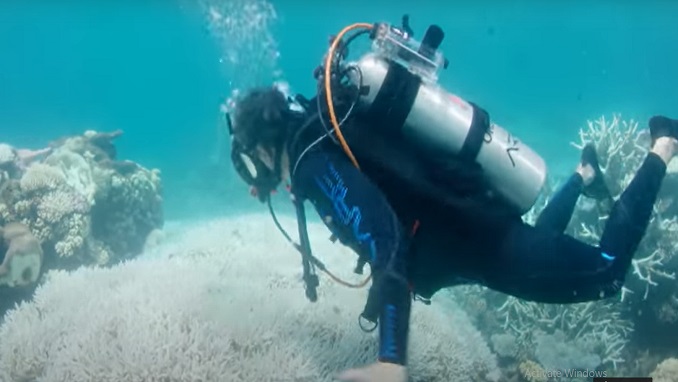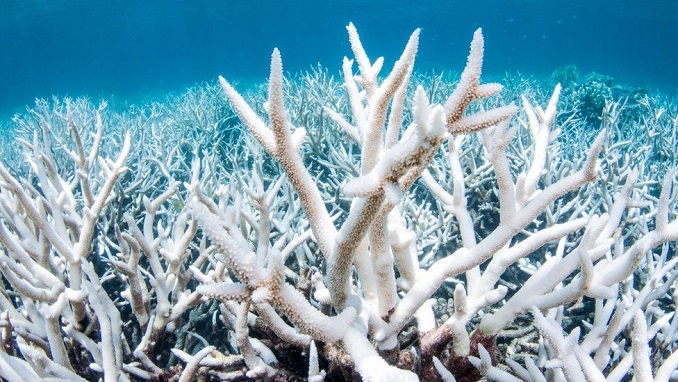
The intense sun from marine heatwaves caused by climate change is the reason behind the sixth mass bleaching event Australia’s Great Barrier Reef is suffering, scientists said Friday noting that bleaching was most severe through central and northern sectors of the marine park.
The Great Barrier Reef Marine Park Authority (GBRMPA) and Australian Institute of Marine Science (AIMS) informed that at least 750 reefs show widespread bleaching.
AIMS coral biologist Neal Cantin explains that when a reef is categorized as severely bleached from aerial surveys, that means that more than half of the living coral cover that is seen from the air is severely bleached completely white and can have signs of fluorescence in the colors of pink, yellow and blue.
Experts who still don’t know the exact extent of the damage, point out that repeated bleaching events with little recovery time severely endanger the reef’s ecosystem and reduce its chances to thrive.
Citing graphs from a 2020 Intergovernmental Panel on Climate Change report, Australian reef scientist Terry Hughes tweeted on Friday that the 2016 bleaching killed billions of corals on the GBR reducing cover by 30% and that was after a 14-year reprieve.

Since then, the Great Barrier Reef suffered bleaching in 2017, 2020, and 2022, and Hughes warns that we will not see a 14-year gap again in this lifetime. Due to large-scale bleaching events, coral has declined globally by 14%.
One of the world’s seven natural wonders, the Great Barrier Reef has lost half of its corals in the past quarter-century and the latest bad news comes in light of the 10-day monitoring mission the UN Educational, Scientific and Cultural Organization (UNESCO) is conducting a to decide whether to add the reefs to its “in danger” list.
If that happens, the Great Barrier Reef would become the first World Heritage site designated as such due to the climate crisis.
Australia rejected UNESCO’s “in-danger” assessment in 2021, strongly opposing the recommendation, with Australia’s Environment Minister Sussan Ley stressing that the Great Barrier Reef is the best-managed reef in the world and that the recommendation has been made without examining the reef firsthand.
UNESCO said in its editorial that the consequences of these changes are not just environmental since nearly three billion people depend directly on marine and coastal biodiversity for their survival.
According to their data, coastal areas that are home to 300 million people could be threatened by rising sea levels due to climate change by 2050.

Be the first to comment